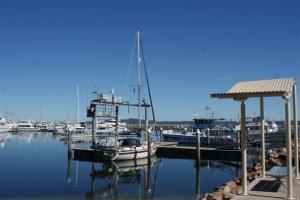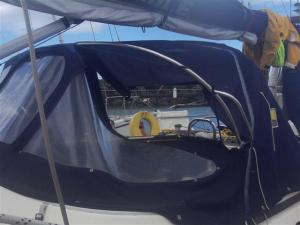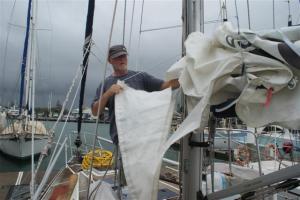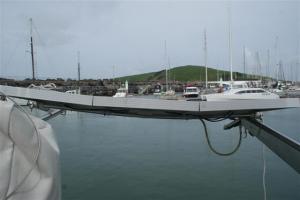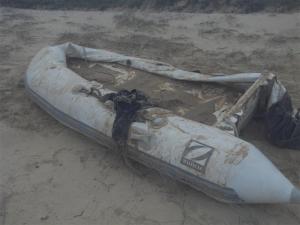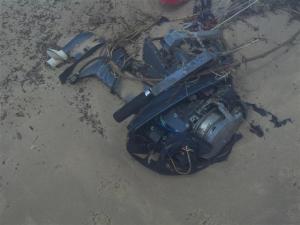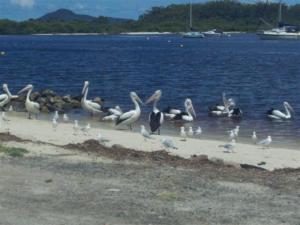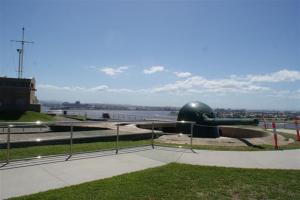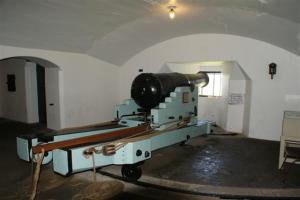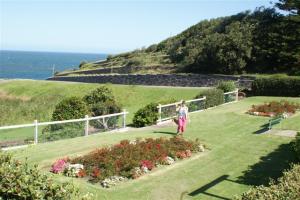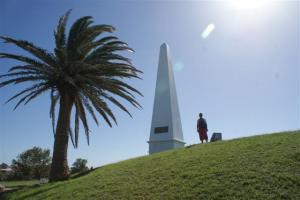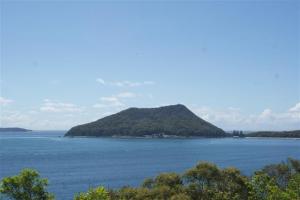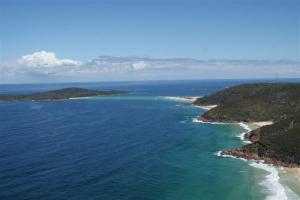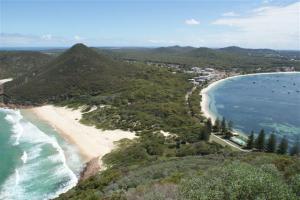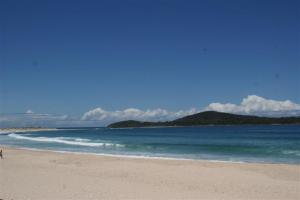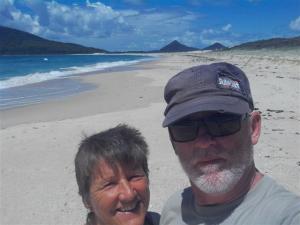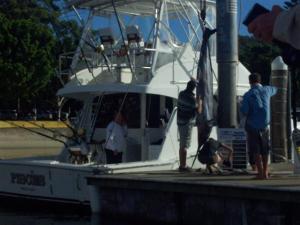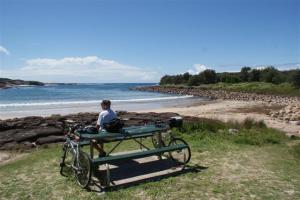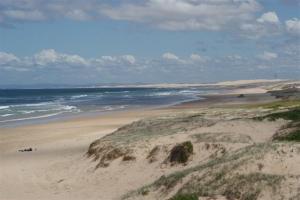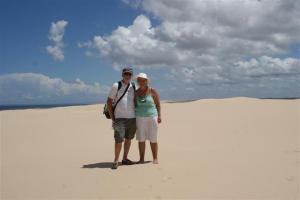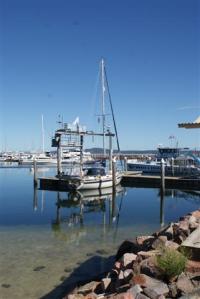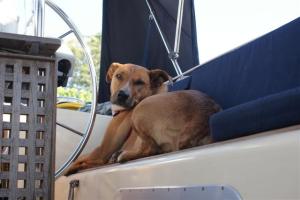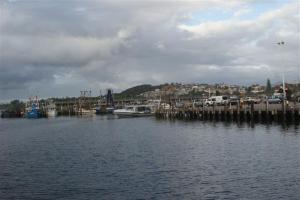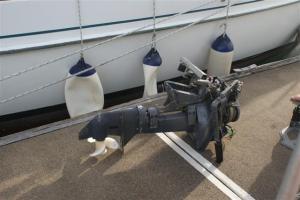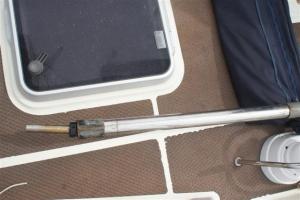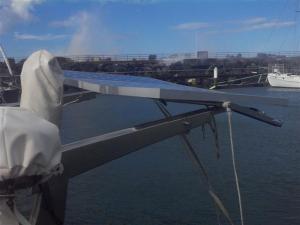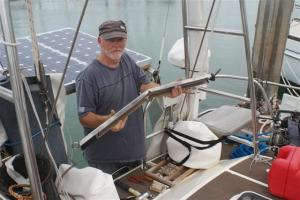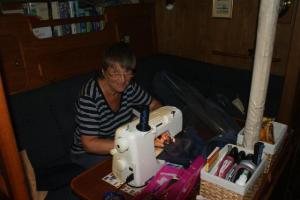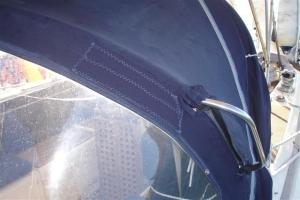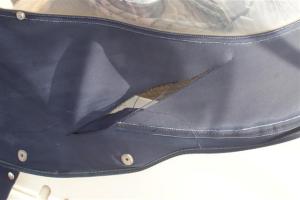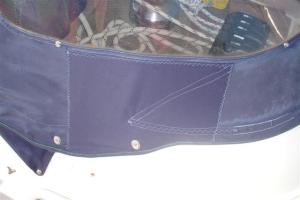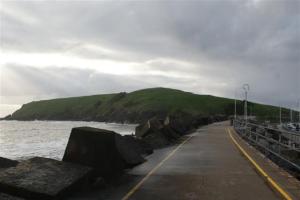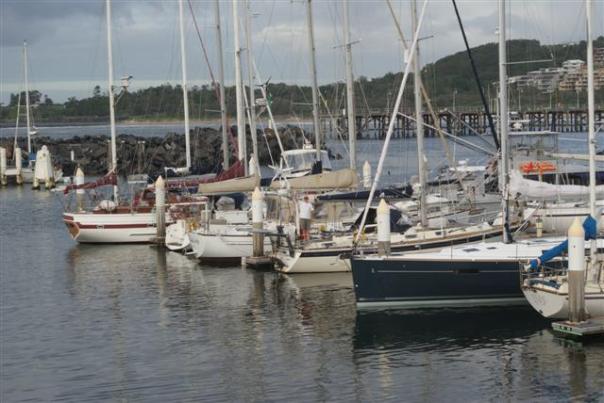Monthly Archives: February 2013
Camomile in storm force 10
Posted by yachtcamomile
We left Nelson bay on the southern coast of Port Stephens 06.00 Thursday 21st for a day sail to Camden 81 miles north. The early morning forecast was for a southeasterly 10 – 15kts with a 1-metre swell. There was increased wind forecast to arrive much further north the following evening and heavy airs the day after that giving us between 36 and 48 hours to do a 12-hour passage. We had been in Port Stephens for 10 days and it was time to move north towards our rendezvous with my sister Kate and her family who were to fly to Brisbane on 14th March.
We hoisted full sails motoring for an hour to the entrance and after rounding the headland we turned off the engine and sailed gently on at 3 – 4kts gradually picking up more wind from the south east. At 10.00 we rounded Sugarloaf Point, the wind perked up to about 18kts and we were zipping along nicely, we would easily reach Camden by 5 or 6pm.
After all that time sitting gently at anchor, the short chop made Sue a little queasy so she retreated below for a short snooze. All was well.
At 14.00 we were off of Cape Hawke and the wind had picked up to 22kts so we put the first reef in the main and rolled away some of genoa.
Passing Crowdy head at 17.00 we were greeted by a wonderful display of dolphins. They were swimming from right to left and seemed to be pointing to Crowdy head harbour; did they know something we didn’t? The wind was still south easterly and blowing 20 – 25kts, well within our comfort zone but up on the forecast.
Camden came into view at 18.30 but the last hour had seen a rapidly rising swell from a metre to well over 2 metres which gave me a concern for entry over the bar. We furled the genoa away and fired up the engine ready for our final approach. To quote from ‘Cruising the New South Wales Coast’ pilot book “Camden Haven is a breakwater harbour between Forster and Port Macquarie. Its bar enjoys good protection from southeast swells under the lee of Point Perpendicular.”
As we approached shallow water the swell kicked higher but, looking ahead at the entrance I was appalled to see a wall of white water breaking heavily right across the bar. I took her as far as the 4metre contour but realised that the conditions were dangerous so aborted our approach and turned back into deep water.
Now what? The strengthening southerly ruled out a return to Port Stevens so we called the VMR (voluntary marine rescue – a cross between the coastguard and the RNLI) on the vhf. They confirmed my feeling about the entrance and suggested we try Port Macquarie or, failing that, the deeper Coffs Harbour. An hour later we called the VMR at Port Macquarie and they confirmed their entrance was also treacherous leaving us no option but to continue overnight to either Trial bay, which faces north and would give us some protection from the southerlies, or Coffs harbour, 80 miles distant. We were now getting 25kt winds from the south east with 30kt gusts and a rising easterly swell making things very uncomfortable. Needless to say the forecast had changed beyond all recognition now but, as we put a second reef in before dark, alarmingly the VMR were now forecasting strong wind warnings coming much earlier than predicted all the way up the coast. The weather system was accelerating well beyond expectations. Our passage window had all but closed so now we had to make best speed and find what shelter we could.
We were in for a busy night but Sue found a chilli in the freezer and managed to heat it up for dinner despite the rapidly deteriorating conditions. Unfortunately she took one mouthful and promptly brought it back along with her lunch. She then decided she felt better, ate the rest of it and kept it down!
It was a difficult overnight passage because the swell had now gone round to the east and was slapping us sideways making sleep almost impossible as the sails and the steering needed constant attention. The Hydrovane wasn’t coping with these conditions well on its own so I engaged the electric autopilot as well and between them they kept our course more steady. By 22.00 the winds were 30kts with 35kt gusts. After good early progress we had also found the south flowing East Australia current which, having given us several knots of speed on the way down, was now pushing hard against us as we clawed our way north through occasional but intense squalls and lashing rain.
After an arduous night with very little sleep we had progressed slowly up the coast. At 06.00 we had travelled 130 miles in 24 hours and tried calling the VMR at Trial bay. They reported that there was some shelter in the southern corner of the bay but the bar across the river was impassable as expected. We considered anchoring for a few hours to get some sleep but the weather was clearly deteriorating and they were forecasting that the wind was going back to north which would put the Trial Bay anchorage on a dangerous lee shore.
It was a harsh knock to hear the storm warning called. By 09.00 we were getting full gale force wind of 35 to 40kt with 45kts gusts in heavy squalls. We were also now able to hear Coffs harbour VMR on the radio, called in our position and said we were battling towards them. The officer on watch gave us the grave news that Coffs Harbour like all ports within 100 miles were closed due to the conditions and approaching storm. We were later told it’s only been closed 3 times in the last 20 years.
The trap was sprung. We were alone in foul conditions, on a lee shore with no where to go. We put the third reef in the main and hove to under a scrap of genoa trying to get some rest before we were hit by the full force of the weather.
I lay down on the saloon sole and Sue wedged herself on the leeward saloon berth but it was impossible; like sleeping in a washing machine. By now the swells were 4 metres and we were being buffeted by rogue waves.
We couldn’t go back against the wind, the weather was coming from the north so we didn’t want to go further, the swell was coming from the east and to the west was a lee shore.
The boat was coping ok at that point but then I noticed that the top car on the main sail had broken away from the sail. We had to motor head to wind to get the sail down so I could try to repair it. We raised the sail again but half an hour later it had broken again and was flapping wildly promising to break free altogether. After turning into the wind again a big gust whipped it badly and it started tearing. We fought it down and lashed it firmly to the boom so it couldn’t do any more damage to the stack pack which had been ripped by the flailing main.
We were sitting ducks without the mainsail so oriented the boat northeast to close with Coffs and get some more sea-room with just a scrap of genoa and trailing a drogue to keep us from broaching on the waves. Unfortunately the waves were now coming at all angles so we were still getting green water over the decks and one rogue wave came over the starboard quarter knocking us down, at the same time water poured over the side and down the hatch flooding onto the navigation table. Sue quickly grabbed towels and started mopping but there was water every where. All our charts for the next part of our trip to SE Asia were in the chart table and Sue lifted them out quickly laying them on the fore peak bunk to dry out. Water had got into the electrics and the wifi dongle was swimming so that was unlikely to work again.
Later, Sue was sitting up in the cockpit keeping watch when another breaking wave hit the side of the boat and poured into the cockpit again. This one ripped the spray hood and the weight of the water bent the davit leaving the dinghy hanging perilously half in and half out of the water. We were to have a further 2 knockdowns during the next 24 hours with spreaders in the water and solid green water sluicing over our cockpit combing.
I rushed to the aft deck to try and do something to save the dinghy but it was too late. I considered towing it on a long line but realised that the last thing I needed now was a rope around the prop so I got my knife and cut it loose. I think that was the worse moment for me as we watched our dear little dinghy with Sue’s homemade cover and clever beaching wheels float forlornly away into the chaos. I was sure I would never see her again.
The waves were now up to 10 meters high, the wind had stopped howling and become a hellish screech driving blinding spume across the surface of the mountainous sea under a black sky rent by cracks of lightning and thunder which could barely make itself heard above the melee.We decided to take the rest of the sail in and run with bare poles although our biggest problem was that we were always too close to the land. We took the drogue up and made our way out into deeper water then placing it again and lashing the helm so we hove to at around 45 degrees to the waves which our slick disrupted enough to stop most of the beam breakers coming down on us
Some breaking waves continued to hit us though doing more damage but thankfully mostly superficial. Good old Westerly “tough as old boots”!
Sue was doing fantastically well despite being obviously really frightened because we just didn’t know how long this horror was going to last. The VMR, clearly concerned, were keeping a two hour schedule with us, updating us as soon as a new forecast came out and were keeping police and rescue authorities appraised of our predicament. Sue was also in contact with our dear friends Dave and Jacqui on the yacht Jackster by text looking for any glimmer of hope that the wind was abating. It’s good to talk, at any rate it keeps your morale up and we were both in need of that.
We stayed out for a second night being blasted by 60kt gusts and huge waves. Sue was so scared; it was a lot worse than the Columbian coast but we hugged and got on with it, what a lady!
After 24 hours sitting outside Coffs harbour lying-a-hull with a drogue (which I had to relay 4 times) and a failed autohelm we assumed we could go in the next morning but the VMR informed us they still had white water right across the entrance. We motored back out to sea for a couple of hours to relay the drogue and went down below, put the hatches in and pretended it wasn’t happening; in fact we both went to sleep, we were exhausted. We woke up at 10am and looked out to see that the wind and swell had both dropped slightly. I called the VMR and asked them to describe the conditions at the entrance. They informed us that the wind had dropped a bit, there were periods of slight swell but they still had 3-4 metre breakers. However they considered, with the tide relatively high, there was a minimum of 4 meters depth. The forecast was for worsening weather and, although we had no serious structural damage I was concerned about the cumulative effect of the problems we did have. I had only just managed to bring the instruments and autopilot back on line with a jury rigged by pass in the electrics and had some concern that they had been affected by the electrical disturbances during the night.
We sorely needed to get in so I decided to go in and “loiter” near the entrance waiting for a smoother patch before making a dash.
Finally I saw a door in the swells open and piled the power on hell for leather towards the entrance. Just when I though I had got it right a wave reared up behind us, followed by another and then a final huge breaker. I really thought we were going to broach or pitch-pole but surging forward in it’s powerful churning foam we surfed for a full 20 seconds, the longest 20 of my life but we made it with the VMR guy guiding us on the radio and the boat equivalent of a handbrake turn into the calm of the inner harbour. Once in the marina it all calmed down and we motored to our berth. Sue just burst into tears of relief, we had made it and were greeted by a group of VMR’s, yotties, and marina staff who had been following or supporting us in our drama. Our heartfelt thanks go out to all of you who have helped and befriended us, it means more to us than I can describe. Thank you.
We didn’t take any photos during the event but these are some of the damage.
Posted in Circumnavigation, Port posts, Redgrove, Sailing, sailing adventure, Westerly, Westerly Sealord
Tags: F10 storm
February Update
Posted by yachtcamomile
I haven’t written any thing for the website for ages because we’ve been so busy but I wanted to fill in some gaps before we continue on our travels.
After Australia Day the weather took a turn for the worse and we couldn’t leave Sydney until 30th January. It was sad leaving Sydney for the last time, we had enjoyed our time in the city but it was time to start heading north again.
We sailed to Pittwater where we spent 4 days with rain on and off so we didn’t do a lot. Monday 4th February we arrived at Lake Macquarie. A saltwater lake that covers an area 4 times the size of Sydney harbour. We spent a week in the lake trying various anchorages as the wind changed direction; they had some nice pelicans there.
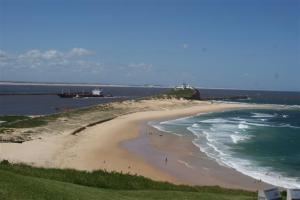 On the 7th February we took the bus to Newcastle, which occupies a bizarre parallel universe to its namesake in northern England. Both were once grimy industrial mill towns based on coal mining that in recent years have been transformed into pleasant places to visit. Both have a fanatical devotion to their local sports teams, although for the Australian Newcastle its rugby rather than football, but that’s where the similarity ends. The Australian Newcastle is sunny most of the time and a surf beach around every bend.
On the 7th February we took the bus to Newcastle, which occupies a bizarre parallel universe to its namesake in northern England. Both were once grimy industrial mill towns based on coal mining that in recent years have been transformed into pleasant places to visit. Both have a fanatical devotion to their local sports teams, although for the Australian Newcastle its rugby rather than football, but that’s where the similarity ends. The Australian Newcastle is sunny most of the time and a surf beach around every bend.
We took a walk to fort Scratchley, which was one of the few gun installations in Australia to fire a gun in anger in WWII. On 8th June 1942 a Japanese sub suddenly surfaced raining shells on the city, Fort Scratchley returned fire negating the threat after just four rounds.
It’s now open to the public with a fascinating walk through the old casements and a view over Nobby’s beach and out to the harbour entrance.
We continued our walk along the sea front, through the gardens and up to the obelisk, which stands on the site of one of the earliest windmills in Australia.
The 11th February brought brisk winds, which gave us a good sail to Port Stephens. We spent a couple of days doing ‘jobs’ (the jobs list never seems to get smaller) tied to a buoy in Nelson bay. Valentines day was gloriously sunny so we decided to unwrap the bikes and go on a bike ride. We headed east to the Tomaree National park where ‘you’re bound to spot a koala or wallaby’, how many did we see? None!!
But we left the bikes and climbed the Tomaree Head Summit walk and enjoyed the spectacular views back down across the peninsular with Shoal bay on one side and across One Mile beach stretching across to Fingal Bay on the other.
We climbed back down and cycled to Fingal Bay for our picnic lunch. We treated ourselves to an Indian meal in the evening for Valentines Day.
Nelson Bay was hosting a fishing competition over the weekend which would have made the anchorage uncomfortable with all the wash from the gin palaces so we motored across the bay and crept up to Hawks nest on the flood tide touching the bottom a couple of times. There was an anchorage at the top with enough water for us to stay for a few days. Hawks Nest and its neighbour Tea Gardens were sleepy little towns where not very much happens! We went ashore for a walk and found a lovely beach on the other side of the peninsular.
Sunday we crept back down the river to Nelson just in time to see the winning team land their huge Marlin weighing in at a massive 180kgs. It was a beautiful creature and I really felt it should be swimming free but at least it was donated to the local Meals on Wheels and not wasted.
Monday 18th we went on a longer bike ride. We stopped for a rest at Harbour bay (the Aussies aren’t very imaginative with their names although there wasn’t a harbour in this bay).
Then continued on to Anna bay at the western end of the Tomaree National park (not a single koala or wallaby spotted again) backed by the amazing Worimi Conservation lands home to the Worimi people who have lived here for thousands of years.
The Worimi Conservation Lands are the longest moving sand dunes in the southern hemisphere stretching over 35km. Think Lawrence of Arabia to get an idea of the sight surrounding us; shimmering sand as far as the eye could see.
On our return we took Camomile into the harbour for our 3 free days on the pontoon inside. It was nice to be alongside for a change and spent the next few days doing shopping and washing.
This is Bracken who belonged to the boat next door but decided we were a good bet for a peaceful sleep while his owner wasn’t looking. Isn’t he beautiful? I wish we could keep him but he had to go back.
After being in Port Stephens for 10 days Thursday 21st brought a weather window allowing us to leave Port Stephens for Camden Haven. We had dolphins swimming in our bow as we left and a good weather window ahead of us……
After the storm (see next blog) we managed to get into Coffs harbour on Saturday 23rd. We were befriended by lots of people all anxious to hear our story and how we managed to survive the storm, including Graham from the VMR who we had spoken to every 2 hours throughout the night. He had been plotting our position and keeping the Maritime services informed of our position who, he said, would have come out to rescue us if any thing drastic had happened. That would have meant abandoning ship and having let the dinghy go Bill was determined Camomile wasn’t going the same way.
Graham informed us our dinghy was on the beach about 5 miles away and took Bill out to see it. Sadly it lay on the beach looking very sad full of sand with the outboard laying next to it with just it’s security wire holding them together. The outboard was put in Graham’s Ute and brought back to the boat but there wasn’t anything Bill could do to revive it. I spent the rest of the day trying to get everything back to where it belonged. I had to wash the floor 3 times to remove all traces of the salt water.
Sunday was spent in the laundry washing all the towels that had been used to mop up the numerous dousings and we were kindly invited to Grahams house for a welcome meal, he also generously lent us his vehicle to borrow while we were in the harbour.
It meant that for the next few days we were able to take the torn sail and the sailbag to the sail maker to be repaired and the bent metalwork to Gary the metalworker. It was strange travelling in a car again.
The sprayhood had been torn both sides with the weight of seawater on it. We stripped it off the frame and I set about repairing it.
Fortunately it had torn along the seam, which was quite easy to re-sew, but the area around the handle was badly shredded so I had to sew a patch over it.
The tear along the other side needed a patch too.
Thursday 28th the sail and metalwork was ready to pick up so off we went in Graham’s car to pick everything up. We also did a big shop. Life is so much easier with a car.
It was great being in a marina for a change, each morning I went for my run up over Mutton bird island to look at the sea. Gradually during our stay it had calmed down but it took several days, good job we came in when we did. Bill worked hard getting the boat back into working order so we could leave, he takes up the next part of the story.
